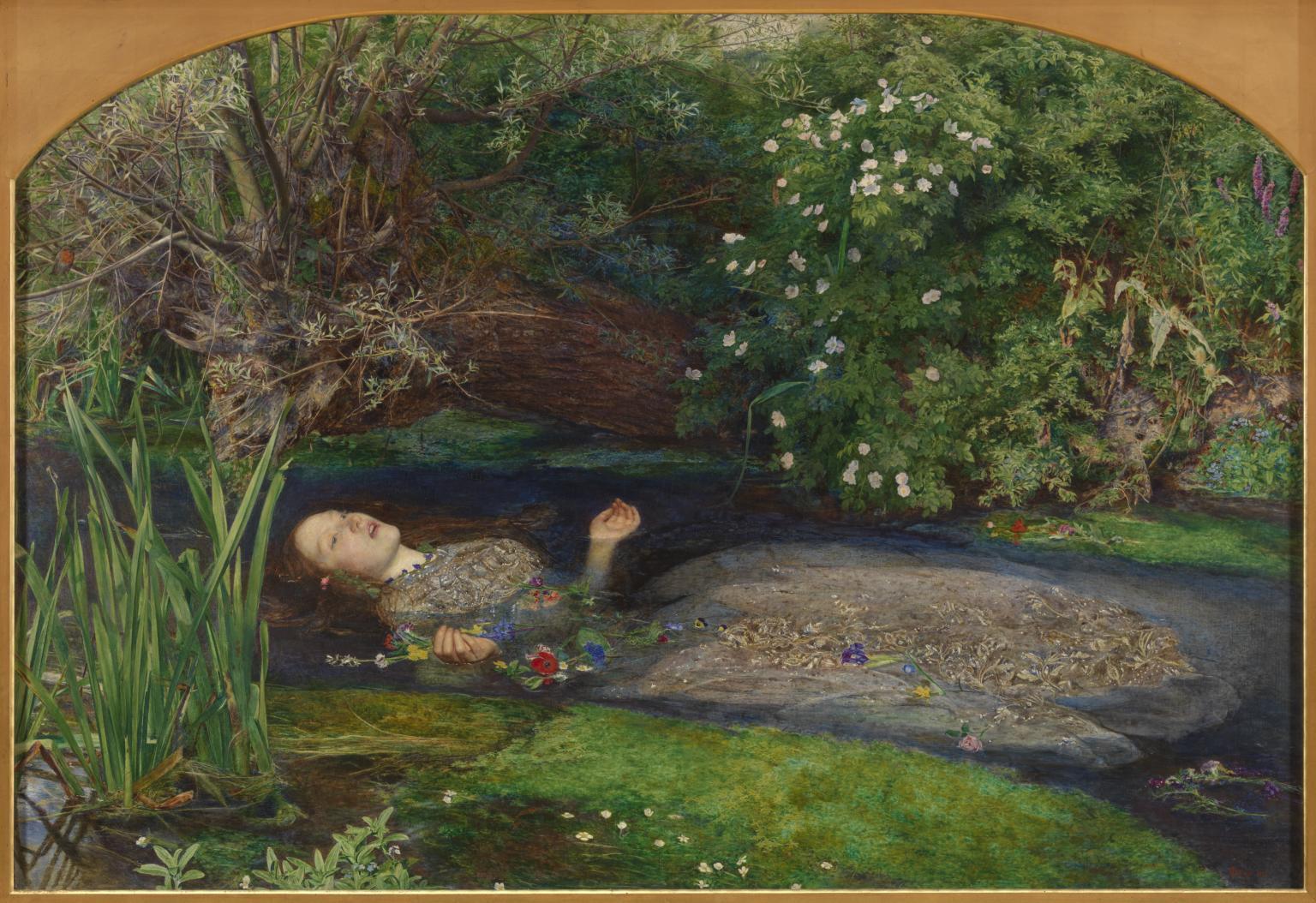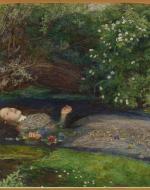Created by Ellen McDermot on Mon, 06/14/2021 - 10:45
Description:
Millais' painting depicts the moment in which Ophelia falls into a stream and drowns, after discovering that her father has been murdered by her lover Hamlet:
There, on the pendent boughs her coronet weeds
Clambering to hang, an envious sliver broke;
When down her weedy trophies and herself
Fell in the weeping brook. Her clothes spread wide,
And, mermaid-like, awhile they bore her up;
Which time she chanted snatches of old tunes,
As one incapable of her own distress,
Or like a creature native and indued
Unto that element; but long it could not be
Till that her garments, heavy with their drink,
Pull'd the poor wretch from her melodious lay
To muddy death.
Hamlet, Act IV, Scene vii
This is the first of two works based on Shakespeare's Ophelia in this exhibition, demonstrating her impact as a source of inspiration amongst the brotherhood. The muse for the work was Elizabeth Siddal, a favourite of the Pre-Raphaelites, who, in order to create the painting had to pose for a four month period in a bath full of water kept warm by lamps underneath, which at one point extinguished, resulting in Siddal falling gravely ill.
Millais' depiction concentrates on the natural setting, picking on natural references in the play, or plants with a symbolical meaning. Roses are used by Ophelia's cheek and near her dress, referring to her brother calling her 'rose of May' in the play. Foliage such as daisies and nettles allude to love, innocence, and pain. The violets she wears around her neck represent chastity and youthful death, which are relevant to her character in the play. The poppies are a common signifier of death. As Millais painted the piece over five months, he was able to utilise plants that would bloom at different points in the year.
This scene in the play is an interesting one to consider in relation to literary influences on the Pre-Raphaelite Brotherhood as the reader does not witness these events in the play, rather they are told by the character of Gertrude. Millais is therefore contributing to our understanding of the text by focusing on this otherwise missing scene.
Copyright:
Associated Place(s)
Artist:
- John Everett Millais


